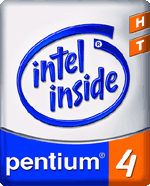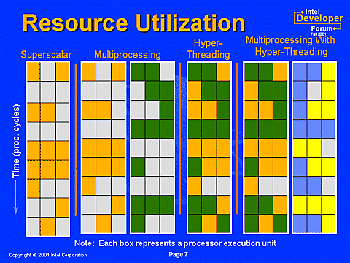Under the Desktop: Mac Ado About Something

Last week, the usual shouting match between the Mac and PC camps in the content creation market grew to a roar. Much like a Pre-Raphaelite symbolist painting, people read all kinds of motives into Adobe’s posting a PC-positive review on its digital video information page.
Adobe posted the review on its digital video products page. After a great deal of virtual tooth-gnashing — kickback from Mac-philes — the company took the page down.
The review was by Charlie White at Digital Video Editing. It’s the third episode in a series of reviews and this time pitted a Power Mac G4 system with dual 1.25-GHz processors versus a Windows XP workstation from Dell, running a 3-GHz Pentium 4 with the processor’s Hyper-Threading feature enabled.
“Mac users will be disappointed to see that this new Dell machine, while priced $629 less than the Mac Dual G4 1.25-GHz machine, was nearly twice as fast on most of the nine benchmarks we ran,” White said.
This naturally irked Mac fans, who read all kinds of conspiracies into Adobe’s posting of the article. Creativepro editor-in-chief Pamela Pfiffner offered her analysis of the competition between the companies in a recent newsletter. I won’t follow that trail.
Instead, I will take this opportunity to offer a couple of thoughts about the general issue of speed in creative workflows and Intel’s Hyper-Threading technology.
Who’s on First, What’s on Second
Aside from the Adobe-vs.-Apple controversy, much of the furor surrounding White’s review involved questions about performance testing and benchmarking. Many Mac advocates refused to believe that Macs could be slower than PCs for graphic-intensive applications.
Believe it.
I confess that I was bewildered by the many doubts expressed by Mac-philes over the review’s reports of “poor” Mac performance. As I’ve mentioned in previous columns, the relative processor performance between platforms can teeter-totter. For a while, Intel has held the lead in both raw processor performance and bus speed, and that’s even when adding in all the technology extras, such as floating-point acceleration and multiprocessing routines.
Certainly, if Apple could tell customers that the Mac was faster than a PC, it would do so. Steve Jobs, or other Apple executives would showcase platform shoot-outs at expo keynote addresses demonstrating the Mac’s better performance, and the company’s Web site would provide links to reviews and features bolstering the results. This was a regular part of Apple’s pitch in years past but it’s fallen away in the past couple of years as Intel has focused on driving up processor speeds.
Instead, Apple has pointed to the performance gains available from its latest Power Mac G4 models over older machines. That gain is marked, especially when comparing current dual-processor models (with the fastest processor speeds) with PowerPC G3 and single-processor G4-based boxes. And for Mac content creators running OS X, the newer models with faster graphics cards also can take advantage of Quartz Extreme.
Still, when comparing processor performance, the fastest Intel P4 will beat the top-of-the-line PowerPC G4. Or even a pair of them.
So how did this switch in performance come about?
Making Things Hyper
Years ago, manufacturers of RISC (reduced instruction set computing) processors, such as IBM, Motorola, and Sun Micosystems, claimed that Intel’s CISC (complex instruction set computing)designs would reach a performance roadblock when compared with its “reduced” architecture. Intel has poured billions of dollars to prove otherwise.
The Pentium 4 uses several technologies to boost performance: Hyper-Threading and SSE2, a.k.a. the Streaming SIMD Extensions 2 engine (see Figure 1). SIMD stands for single instruction, multiple data, a way of speeding the vector operations in multimedia and digital signal processing applications. The PowerPC’s Velocity Engine, also called AltiVec, also provides similar vector acceleration.
 Figure 1: The Intel Inside campaign is getting a byte more complex. The yellow letters “H” and “T” stand for the company’s Hyper-Transport technology (caps and dash required). Some Pentium 4 chips have it and some don’t.
Figure 1: The Intel Inside campaign is getting a byte more complex. The yellow letters “H” and “T” stand for the company’s Hyper-Transport technology (caps and dash required). Some Pentium 4 chips have it and some don’t.
Many creative pros are familiar with the MMX instructions for speeding graphics processing in the earlier Pentium architecture; and SSE included support for the MMX code as well as improving floating-point performance. SSE2 is Intel’s second-generation set of SSE routines, expanding and accelerating the capabilities of the unit.
Hyper-Threading is another Intel acceleration scheme. It creates a virtual second processor, letting multithreading savvy applications divide up tasks into two sets of smaller pieces that can be worked upon simultaneously (see Figure 2). This plan also lets the processor work more efficiently.
 Figure 2: This illustration shows that Hyper-Threading can make the Pentium 4 work more efficiently — the white spaces disappear. If a space has color then it’s busy, while white shows that it’s idle for that moment. Of course, in the multiprocessing example on the right-hand side, it’s doing twice the work.
Figure 2: This illustration shows that Hyper-Threading can make the Pentium 4 work more efficiently — the white spaces disappear. If a space has color then it’s busy, while white shows that it’s idle for that moment. Of course, in the multiprocessing example on the right-hand side, it’s doing twice the work.
However, the Hyper-Threading technology isn’t offered in all P4 chips, there are two flavors. Currently most machines running a P4 don’t provide the acceleration, and until recently Hyper-Threading was found on servers and high-end workstations. According to an interesting roadmap document revealed by ExtremeTech, Intel will extend Hyper-Threading into business and consumer models over this year.
As expected nothing is free in the computer world, and developers must code their applications to take advantage of the SSE2 and Hyper-Threading acceleration.
In addition, not every program or task will go faster with Hyper-Threading support. According to a briefing at last fall’s Instat/MDR Microprocessor Forum, some tasks can benefit as much as 25 to 30 percent from Hyper-Threading optimization, but others won’t. It could even make some tasks go slower.
This potential performance hit is somewhat mitigated by the rising base speed of the processor. It all depends on what you need to do and whether your applications support the acceleration.
Changing Fortunes
Meanwhile, will the processor performance battle return to equilibrium? No doubt.
As I discussed last fall, many signs point to Apple’s use of the IBM’s PowerPC 970 in future Macs (rumors abound about this possibility and knowing Steve Jobs, anything else is possible). This processor is a version of IBM’s POWER4 architecture.
According to rumor sites this week, the chip is in production now, with frequencies from 1.8-GHz to 2.5-GHz. However, the same pages have stuff that’s obviously way, way off base.
Regardless of these rumors and processor-performance metrics, I advise content creation professionals to look to the “big picture” when deciding between platforms. While processor performance should be weighed, so should support for color management, a robust application scripting architecture, connectivity with imaging hardware, and more.
Nevertheless, the recent raft of encouraging rumors about the PowerPC 970 also concerns me. I recall a rabbinic saying: “If you hear your neighbor died, believe it; but if you hear he became rich, don’t believe it.” We will have to keep reading the rumors and wait for more solid (correct) reporting.
Read more by David Morgenstern
This article was last modified on January 3, 2023
This article was first published on April 10, 2003



